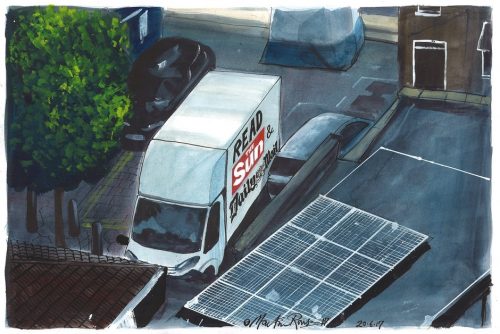
© Martin Rowson
In last week’s Guardian the PCO’s Martin Rowson demonstrated, with a perfectly executed example of his art, how the political cartoon can pierce the thickest of skins – see Daily Mail editor Paul Dacre’s reaction – and cut straight to the heart of the matter.
Frustratingly, as newspapers continue the painful transition from print to digital, many of those that still employ political cartoonists lessen the impact of their work by relegating them to the less travelled backwaters of their websites. New Yorker cartoonist Chris Weyant, much like our own Andy Davey in a previous Blog article, questioned the way political cartoons were being used online and, happily, seems to have found a solution that should have publishers sitting up and taking note.
Weyant, who also spent fifteen years as a political cartoonist, was bewildered by newspapers’ failure to properly utilise their assets. “It just didn’t seem to make sense,” Weyant told Editor & Publisher’s Rob Tornoe. The lack of interest in digital political cartoons at newspapers with a history of cartooning was a puzzle. “The internet is a visual medium, so it seems obvious cartoons could be an important asset to journalism’s evolving digital business model.”
So the cartoonist took it upon himself to do some research and, according to traffic numbers Weyant has been studying, readers that enter a publication’s website through a topical cartoon tend to spend 25 percent more time browsing the site than they do entering through any other type of content.
“They stay so much longer and go so much deeper when they click a cartoon versus any other type of content,” Weyant said. “That’s an amazing metric of real reader engagement.”
A pretty convincing case for featuring cartoons more prominently. Even Mr. Dacre wouldn’t argue with that…
